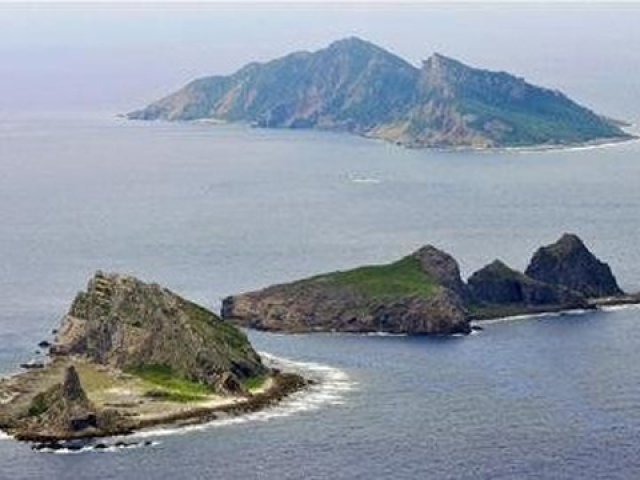
Spiraling Surprises in Sino-Japanese Tensions
Publication: China Brief Volume: 13 Issue: 2
By:

Ever since the Japanese government bought several of the Diaoyu/Senkaku islands from a private owner, Sino-Japanese relations have been in a downward spiral. Japan’s change of government following the mid-December elections that returned power to the Liberal Democratic Party has seemed only to exacerbate the tensions created by what Xinhua called “the island-buying farce” (Xinhua, January 13). In contrast with Abe Shinzo’s first time as prime minister and the first Democratic Party of Japan government, Tokyo started on a different tack that did not involve rebalancing between China and the United States. Instead, Japan has confounded Chinese expectations by advocating a more robust regional maritime security architecture that also draws India into the Pacific—something Beijing repeatedly has warned against as tensions in the South China Sea simmered over the last year (Straits Times, December 4, 2012; Times of India, June 3, 2012; Global Times, February 29, 2012). Chinese surprise at Japanese actions suggests one of two possibilities: either Beijing has made a decision to pressure Japan irrespective of the possibility of success or that there is a major information processing problem that is keeping away or politicizing information that should be reaching the leadership.
State media said the Japanese prime minister had broken his word about placing relations with China at the forefront of Tokyo’s diplomatic priorities. In light of his recent op-ed on a maritime security partnership, Abe’s trip to Thailand, Indonesia and Vietnam appeared to be a Japanese attempt at containment (Xinhua, January 16, January 13; Project Syndicate, December 27, 2012). The often-shrill Global Times, however, called Abe’s trip a laughable effort to contain China, calling Japanese provocations “no better than a kind of self-comforting [sic].” Because of Japan’s political instability, Tokyo’s actions reflect symbolic politics for domestic consumption—Beijing should just wait and see to show the region how ineffectual Japanese actions really are (Global Times, January 16).
For the present, China is not content to wait. Beijing seems to be trying to balance a three-pronged approach to Japan: maintaining China’s right to patrol the disputed areas; threatening to escalate the crisis; and, finally, showing an opening so the Japanese government gets blamed. Foreign Ministry spokesman Hong Lei had denied that Chinese maritime or aerial patrols have done anything outside the normal range of their lawful activities even as they appear to have expanded to protect Chinese sovereignty (Xinhua, January 15, January 7). At the same time and following reports that the Japanese were considering firing warning shots, the Chinese military flew J-10s near the disputed area and announced that on January 7 bombers had successfully carried out an “open-sea surprise attack” (PLA Daily, January 18; Want China Times [Taiwan], January 16; Xinhua, January 15). Lastly, while hosting former Japanese Prime Minister Hatoyama Yukio at the Memorial Hall of Victims of the Nanjing Massacre, Chinese papers editorialized that Hatoyama’s visit is proof that good Japanese exist and that they may diverge from the “rightist” path toward confrontation (Global Times, January 18).
Chinese attitudes about a possible confrontation seem to be hardening or at least falling back to the position that only preparations for war can deter Japan from exploiting the situation. One editorial pessimistically concluded “A military clash is more likely. We shouldn’t have the illusion that Japan will be deterred by our firm stance. We need to prepare for the worst” (Global Times, January 11). Ren Weidong, a Ministry of State Security (MSS) analyst with the China Institutes of Contemporary International Relations (CICIR), suggested in a seeming allusion to Vegetius that Beijing needed to forgo its romanticism and make wartime preparations to preserve the peace. This is the only way to show the strength under pressure necessary to maintain China’s course of peaceful development (People’s Daily, January 18). General Secretary Xi Jinping’s recent reshuffle of military officers suggests he is trying to improve his connections, connectivity and, by extension, his authority within the People’s Liberation Army in case tensions beget a real crisis (“Commander-in-Chief Xi Jinping Raises the Bar on PLA ‘Combat Readiness’,” China Brief, January 18). This is not a question of loyalty, but rather of having a trusted network of officers within key positions across the force. With potential distortions of bureaucratic information flows and the tight control over what information means, a robust network is necessary for Chinese political leaders to maintain situational awareness during a crisis.
Although Beijing’s apparent heightened alert raises concern, some larger questions should be asked about the quality of the information inputs into Chinese policymaking related to Japan and the East China Sea. Did Chinese leaders really not understand the bad choices facing Tokyo when the potential sale of the Diaoyu/Senkaku islands became an issue last year, even after Japanese diplomats made quiet entreaties? Some Chinese analysts blame the influence of “rightists” for the derailment of Sino-Japanese relations, despite State Councilor Dai Bingguo’s notable essay on recalibrating Chinese foreign policy at the end of 2010—the year China overplayed its hand (Global Times, January 18; China Daily, December 13, 2010). It is not as though China lacks senior specialists with rank sufficient to make an analytic judgment. For example, one of the MSS vice ministers, Lu Zhongwei, was a career Japan watcher at CICIR before taking an operational post as chief of the Tianjin State Security Bureau (CCTV, June 7, 2011; www.tjdx.gov.cn, October 27, 2006; People’s Daily, December 21, 2001). There are a set of processes here—or a lack thereof with Beijing pursuing a deliberate course without regular inputs—that are not necessarily well understood [1]. Yet, as a crisis looms, knowing how information is moving through the system and how it is interpreted is crucial to tailoring responses to Chinese actions.
Notes:
-
Peter Mattis, “Beyond Spy versus Spy: Clarifying the Analytic Challenge of the Chinese Intelligence Services,” Studies in Intelligence Vol. 56, No. 4, September 2012, pp. 47–57 < https://www.cia.gov/library/center-for-the-study-of-intelligence/csi-publications/csi-studies/studies/vol.-56-no.-3/beyond-spy-vs.-spy-the-analytic-challenge-of-understanding-chinese-intelligence-services.html>.





